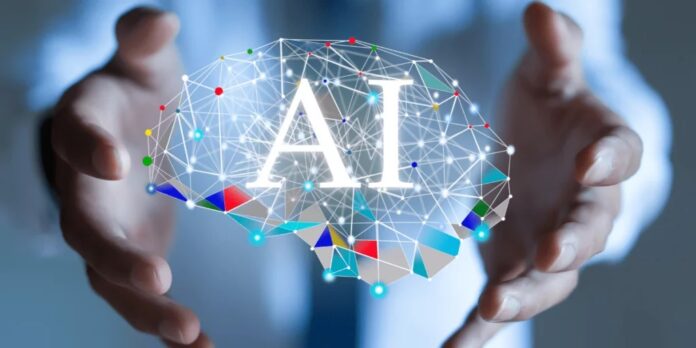With “AI for social good” becoming something of a rallying cry for advocates of artificial intelligence (AI), much of the debate concerning this phenomenon is shifting to AI uses that have acknowledged benefits, either for individuals or for society at large. Before considering such artificial intelligence benefits (or disadvantages, as the case may be), it’s worth taking a step back to consider what actually constitutes AI today and how the application of artificial intelligence is impacting daily life in both the personal and corporate arenas.
What Is AI?
Artificial intelligence or AI is a branch of computer science that brings together multiple disciplines, with the aim of creating smart machines — devices and systems capable of performing complex tasks that often require human intelligence, but in a manner that equals or exceeds the capabilities of humans.
There are two main classes of artificial intelligence: narrow or weak AI, and strong AI or artificial general intelligence (AGI).
Narrow or weak AI encompasses all of the artificial intelligence uses currently in existence. It consists of systems and machines designed or programmed to perform a specific task very well, such as facial recognition, for example. While capable of recognizing faces with greater speed or accuracy than a human, weak AI for facial recognition is unable to distinguish between houses, cars, or other objects.
Artificial general intelligence (AGI) or strong AI is an ideal state where intelligent machines will be able to perform a broad range of tasks, all at levels well beyond what a human is capable of. It’s a level of AI technology that we have yet to reach.
How do we use AI?
How is artificial intelligence used? How can I use AI, personally? Well, if you found your way to this web page via Google or some other search engine, artificial intelligence will have played a part in getting you here. Each time you initiate a web search, the complex mathematical processes or algorithms at the back end of the search engine make recommendations based on logical associations with the words you type or speak. They also make a note of how you respond to the results, using your interactions to refine future searches.
Online search and recommendation engines are just one of the many applications of AI in our daily lives that we take for granted. Other uses of AI cover a wide range of areas and industries, including:
Virtual Assistants or Chatbots
Consumer platforms like Amazon Alexa, Apple’s Siri, and Google Assistant use voice-to-text technology, internet connectivity, and AI capabilities to perform searches, create to-do lists, order items online, set reminders, and answer questions. They can also integrate with your smart home and entertainment systems to automate your daily routines.
Chatbots or conversational interfaces use algorithms to train machines for catering to consumers. Advanced chatbots can answer complex questions requiring detailed responses and give users the impression that they’re interacting with a human customer representative. Artificial intelligence in web applications like chatbots is saving commercial organizations money by reducing labor costs while enhancing the customer experience.
AI in Agriculture and Farming
Plant health and weather monitoring systems powered by AI can help farmers to boost crop productivity. Elsewhere in the agriculture sector, robots, autonomous tractors, and drones are helping to monitor crop health conditions and implement harvesting, enhancing the productivity and crop yield of farmland.
Autonomous Vehicles and Aircraft
Unmanned Aerial Vehicles (UAVs) or drones are very much a part of our airspace, conducting surveillance and acting as delivery services in a growing number of schemes, including the delivery of medicines and essential supplies to elderly citizens confined to their homes due to COVID-19.
While the autonomous or self-driving vehicle market is still very much in its infancy, there are enough prototype and pilot schemes to suggest that such cars and trucks will become more widespread as artificial intelligence and IoT (Internet of Things) technologies develop and mature.
Online Commerce (eCommerce) and Shopping
Machine learning (a branch of AI) is improving the online shopping experience of consumers, enabling more personalized recommendations and more streamlined buying processes.
Automated warehousing and supply chain management systems powered by AI are assisting commercial organizations to improve their logistics, while sentiment analysis is enabling them to stay more in tune with the preferences and behavior of their customers.
AI Helps in Security and Surveillance
Drone surveillance, AI-based facial recognition, and biometric systems are enhancing the security profiles of the organizations and governments that deploy them. While there are positives to this, there are, of course, concerns about privacy, spying, and the “Big Brother” factor.
Manufacturing and Production
In the industrial sector, AI systems are helping manufacturers maintain quality control standards and to keep their operations running, through proactive monitoring and data analytics that enable preventative or predictive maintenance. AI technologies are also powering robotic process automation (RPA), which is shortening production cycles and boosting efficiency.
Healthcare and Medical Imaging Analysis
In health and life sciences, AI is playing an increasingly important role in powering the machines that diagnose, analyze, and predict the course of various types of disease, and in monitoring patient health conditions. AI systems and robotics are also easing the physical workload of medical personnel and automating many of the administrative and routine functions of health facilities.
Benefits of AI
So in light of all this, how appropriate is the “AI for social good” mantra?
As we can observe, there are several artificial intelligence benefits, including the following:
Endurance and 24/7 Availability
AI-powered machines don’t need to eat or sleep and can perform the repetitive or complex tasks for which they’re programmed without errors (assuming the initial programming is sound).
AI Offers Greater Efficiency for Industries
Robotics and AI can help organizations perform their tasks better — and with machine learning (ML) and deep learning (an advanced form of ML using artificial neural networks), AI can become smarter over time, increasing efficiency.
Convenience and Opportunities for Individuals
AI technologies like virtual assistance and the intelligent automation of routine processes are making it quicker and easier for individuals to perform the tasks of their daily lives — and enhancing this performance in many ways. This is freeing up time and energy for people to dedicate to creative and social pursuits.
Health and Safety
The impact of AI on the health sector is improving patient outcomes and enabling health providers to operate more efficiently and cost-effectively. Robots and automated systems are also reducing the risk to human workers by operating in hazardous or unsafe environments.
While technologies like drone surveillance and the use of AI in law enforcement and the justice system do throw up concerns about privacy, data governance, and institutional bias, overall, the benefits of artificial intelligence currently outweigh the disadvantages. Our responsibility as humans is to make sure it stays that way by taking all the necessary safety precautions and ensuring that the programming and implementation of AI remain in tune with our goals and standards.





